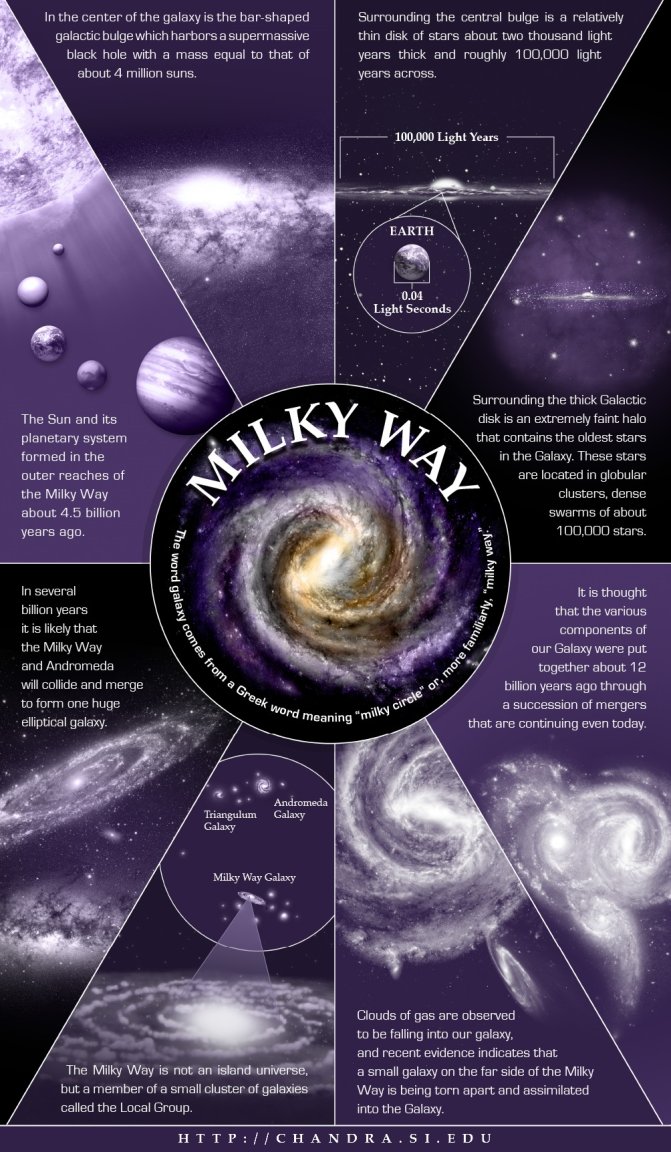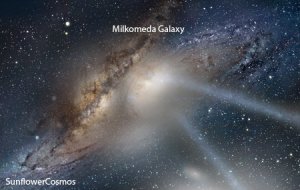

For most of us, finding out how old we are really isn’t too difficult. There are birthday parties, calendars and even apps for that (on the wonders of technology). For us, birthdays happen every 365 days, or one Earth year. To look at it in another way, each time you celebrate your birthday, not only are you celebrating the fact that you have aged (and, as a result, are one year closer to death) but you are also celebrating the fact that you’ve completed yet another orbit around the Sun.
Sadly, for our poor Milky Way, it doesn’t have this same luxury. It doesn’t have any parents to ask, all of its children (read, stars) vary drastically in age and these matters are tricky. So how do we figure out how old the Milky Way actually is?
HOW IT FORMED:
![An artist rendering of a young galaxy (Credit: ESO/L. Calçada [Source])](https://futurism.com/wp-content/uploads/2014/03/Early-Galaxy.jpg?strip=all&quality=85&w=300&h=225)
Before we can answer that question, we must first ask how the Milky Way formed in the early universe. Our galaxy, along with all other large ones, form in one of two ways: of two ways: either through the slow consumption of smaller galaxies, (called “hierarchical clustering”) or through the monolithic collapse. This essentially says that at some point in the distant past, all parts of our galaxy formed at approximately the same time, coming from some colossally huge primordial gas cloud. Under this scenario, most of the star formation was triggered during this same time, with subsequent second and third generation stars rising from the ashes left behind when the massive stars went supernova.
We have a few reasons for believing that the former hypothesis (hierarchical clustering) is the more likely option; with galaxy mergers being the main driving force in galaxy formation. The biggest evidence for this option continues to unfold right before our eyes, as right now, at this very second, we’re seeing several dwarf galaxies being swallowed up by the Milky Way. Yes, right now! The Large and Small Magellanic Clouds are the most notable galaxies involved in our galactic mergers. Both can faintly be seen in the night sky (at least from the Southern Hemisphere, anyway). We also have the Sagittarius Dwarf Galaxy, which is more difficult to locate. And let’s not forget Andromeda either. We’re well on the way to having a collision of galactic proportions!
WHY MENTION ALL OF THIS?
Well, from what we’ve discussed so far, it becomes evident that pinning down the actual age of the Milky Way can really be quite difficult. The Milky Way, as we see it right now, could be very different than it was about 5 or 10 billion years ago. And it will be very different once it collides with Andromeda in a about 4 billion years. However, We can be pretty sure that it hasn’t changed much in the last 1 or 2 billion years, as it takes a LONG time (a few hundred million years) for the dust to settle following s galactic merger (the elegant spiral galaxies generally turn into huge galactic blobs for a time). Per our renderings of how the Milky Way looks from far-away, we can deduce that our galaxy is a “stable looking” spiral galaxy. This would indicate that nothing major has happened in at least a billion years.

Pushing this thought a little further, we can guess that the Milky Way has never been involved in a cataclysmic event (although one paper has linked our galaxy to a minor collision with Andromeda that purportedly took place in the distant past). We know that when the Milky Way and Andromeda eventually collide, a giant elliptical galaxy will be left behind in their wake.
To summarize the above points: we know that there hasn’t been any major mergers over the last few billions of years. Proof of this lies in the fact that the Milky Way is a barred spiral galaxy, NOT an elliptical galaxy. We can deduce, therefore, that the Milky Way isn’t likely to have changed a great deal since its formation, so we can say that the age of our beloved Milky Way is likely to be similar to that of its oldest stars.
So if we’re going to be searching for some of the oldest stars found anywhere in the galaxy, where do we look first? Any guesses? The best place to look would be in a location where there is an abundance of stars, all with the same general age, which brings us to:
GLOBULAR CLUSTERS!
Globular clusters are ideal since not only are they home to a plethora of stars, but most of them are quite old, having formed VERY early on in the first epoch of the universe’s history. In order for them to be of use in helping us calculate the age of the Milky Way, we must determine the age of the stars within the globular clusters. The most up-to-date galaxy evolutionary model has larger galaxies forming through many smaller galaxy mergers. Many of them likely started on, and built up around, a small collection of stars (i.e. globular clusters). Therefore, Globular clusters can be thought of as left-over remnants of galaxy formation in the early universe, thus the age of our galaxy is intrinsically tied to the age of these stars.
![The Omega Centauri Globular Cluster (Credit: ESO) [Source]](https://futurism.com/wp-content/uploads/2014/03/Omega-Centauri.jpg?strip=all&quality=85)
In our case, we’re just going to focus on determining the age of one particular globular cluster, Omega Centauri (NGC 5139). This cluster has an estimated age of about 12 billion years (meaning, the stars formed about 1 billion years after the big bang). Our galaxy can’t be much older than that, as these are the oldest stars found within our galaxy (bar a few notable examples). We can also deduce that these are first or second generation stars based on their metal content (the earliest stars contained minute traces of heavy metal because, as we know, heavy elements are forged in the cores of massive stars. When they go supernova, they seed the interstellar medium with the material, which becomes locked up in stars that are in the process of forming)
Ultimately, this leads us to conclude that the Milky Way is 13.6 +- 0.8 billion years old. Thus, the Milky Way is essentially the same age as the universe itself.
Obviously, this only serves as a rough estimate. There are about 150 additional globular clusters in the Milky Way. Some will be a tiny bit older, and some a bit younger, than this. But it’s the best system we have thus far. A better age estimate can be obtained by looking at beryllium levels, but this task is notoriously difficult. And it is a discussion for another day, another time.
THE MILKY WAY, INFOGRAPHIC:
